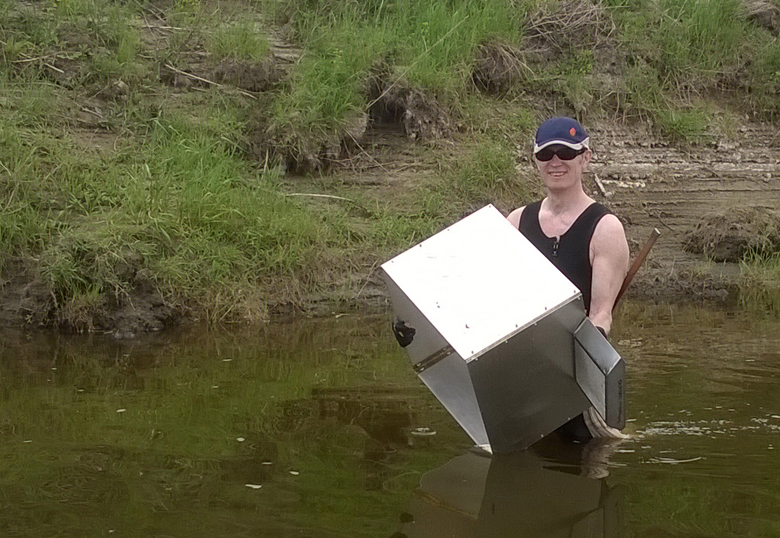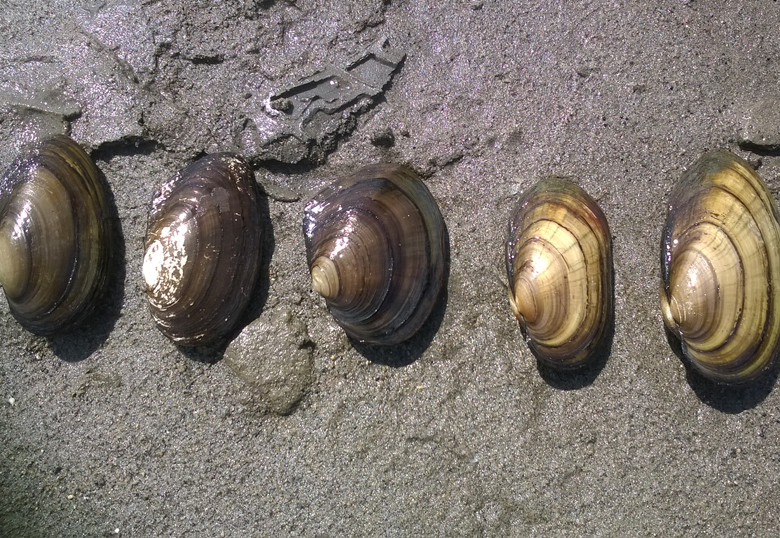Freshwater mussels in Alberta spend their lives out of sight but a Finnish researcher who has studied them since 1993 hopes they don’t stay out of mind.
The results of a study by Dr. Jouni Taskinen, a professor from the University of Jyväskylä in Finland who is a world expert on freshwater mussels, and University of Lethbridge biology professor Dr. Cam Goater, point to a troubling trend.
Taskinen and Goater have studied the Battle River southeast of Edmonton, a river that hosts the highest diversity of freshwater clams in Alberta.

“There’s some good news and some bad news,” says Taskinen. “The good news is that we could find small, one-year-old individuals of even the rare species. That shows that even the rarest species are reproducing in the river. It is a good sign of current reproduction, but the bad news is that there has been a drastic decline in clam density.”
Taskinen says similar results are being reported in many other areas of the world, making freshwater mussels one of the most endangered aquatic organisms.
“It’s quite a universal phenomenon that almost everywhere, native freshwater mussels are declining and there are probably several reasons that act together,” he says.
Those reasons include the building of dams, which affect the mobility of fish, increasing amounts of silt on the river bottom from human activities like construction, toxic contaminants in the water, or hot, dry weather that reduces water flows. Natural enemies like clam-eating muskrats, dam-building beavers and sterilizing parasites are also on the list. Fortunately, the exotic, invasive mussel species like the zebra mussel are not yet a problem in Alberta.
Taskinen and Goater were post-doctoral fellows at the same lab at the University of Alberta when they first began studying clams in the Battle River. They decided to conclude their study this year since Taskinen is on sabbatical leave. In early June, Taskinen, his wife and four daughters arrived in Lethbridge to continue the study and to explore southern Alberta.
The Battle River is a hotspot of clam diversity in Alberta, likely because the river, which doesn’t originate in the mountains, has a more stable bottom environment that isn’t subjected to spring flooding. Taskinen and Goater have taken samples from the river every 11 years to assess clam biodiversity in the river and to evaluate changes in the density and age structure of clam populations.
“We don’t usually even see them but they are important players in the river or lake ecosystem,” says Taskinen. “They collect material from the water column and transfer it to the bottom where it is a good food source for insect larvae, for example. The insect larvae, on the other hand, are food for fish. Mussels provide all sorts of ecosystem services, including cleansing of water.”
Alberta is home to four main species of freshwater mussels, including the fatmucket, the most common clam, the white heelsplitter, the giant floater and the creek heelsplitter.
The life cycle of the clam begins with a larval stage. The adult female releases larvae called glochidia that attach themselves to the gills or fins of fish. Under normal circumstances, they don’t hurt the fish, but stay attached for two weeks to a month as they metamorphose into juveniles and then drop off to settle on the river bottom. If they happen to settle into a suitable environment, a new mussel bed is formed.

The distribution and occurrence of clams in Alberta, and in many other parts of the world, haven’t really been mapped out because they are not easy to find. But scientists do know that 40 species, out of 400 to 500 species of clams in the world, have gone extinct in the last century and many others are close to extinction.
“Mapping the distribution and densities of clams in Alberta rivers is a top priority for the management and conservation of this important but poorly known part of biological diversity. That’s one of the directions that we would like to take our research in the future,” he says.
Taskinen and his family will return to Finland at the end of July but they’ve used their time in Alberta to visit mountain and prairie landscapes alike.
“We have enjoyed being here and the weather in Lethbridge has been so nice while it’s been cold and rainy in Finland,” he says.
